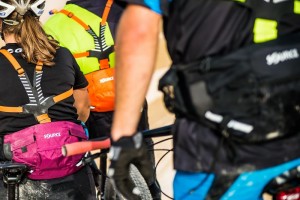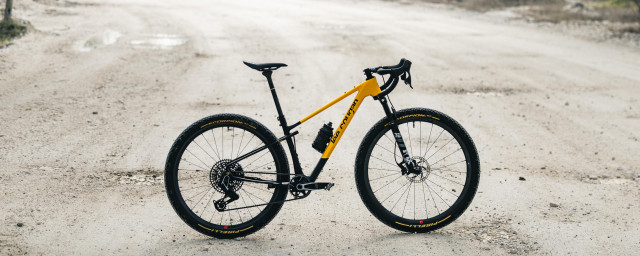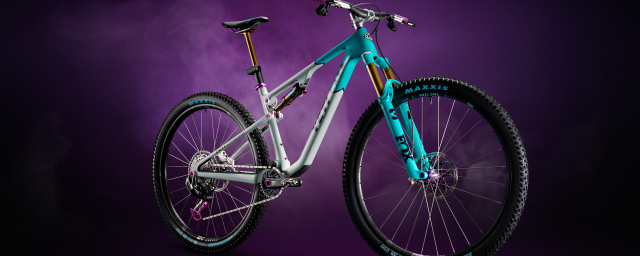The Apidura Racing Hydration Vest is a minimal pack with a 2-litre reservoir and several pockets and pouches for food and ride essentials. The construction is excellent with a good choice of fabrics, with the only slight negative being the bladder, which does move around a bit.
- Camelbak Chase bike vest review
- CamelBak Solstice LR 10 women's hydration pack review
- Buyer's guide to hydration packs for mountain biking
The vest marks a step sideways for the brand, more known for producing bikepacking bags popular amongst many ultra-endurance riders. The Racing Hydration Vest takes design queues from a running hydration vest than your typical cycling pack. While this vest can be used for any form of cycling, the design is predominately for a drop-bar riding position where distance cycling is the focus.
Apidura says they have created two sizes to fit riders of any size. We have an S/M for testing, which is designed to fit riders from 60cm/24” chest (no, that is not a mistake) and has a total capacity of 5.5-litres. Whereas, the L/XL is for chest sizes 96cm/38” and upwards, with a capacity of 7-litres. As a rider with a 86cm/34” chest, I tested the S/M version. There is plenty of adjustment for riders with a larger chest that would prefer the smallest option.
The pack is adjustable across the chest by two buckles and on each side with double elastic cords, which can be locked and released quickly to suit, even while riding. This could be useful for longer rides or races, setting the bag to have a little more circumference to start with a full pack and tightening the fit as you drink and eat items stored within it.
There are two main storage areas on the back for items you might only need occasionally – such as tools, mechanical spares or a phone. These compartments are in addition to the reservoir pouch and 3 easy to access pockets on the front. If there was one small thing I'd like to have seen is an open mesh pouch on the back for easy stashing of a lightweight rain jacket or other extra layers when not needed.
The front features easy access pockets on each side, using the same elastic cord adjustment as the sides. These are quite deep with enough flex making them perfect for stashing food. There is also a zipped pocket, which could also be used for food, or perhaps a small phone or an action camera if you might want effortless access on the go.
It was always comfortable to wear whether the pack is rammed full or empty, thanks to well-positioned shoulder straps that helped balance out the weight. The pack weighs just 240g, plus 136g for the 2-litre reservoir, making it extremely light compared to other hydration packs. The minimal Camelbak Octane XTC weighs 310g, and the Camelbak Chase vest we tested a little while ago is a touch heavier at 285g.
When riding, the stability of the vest was especially impressive on steeper downhill sections where a more typical pack can have the habit of riding up, which can be rather annoying.
The supplied 2-litre reservoir has its own pocket accessed using a zip on the top of the bag. The reservoir itself has a clasp closure with a fold-down section held inside with a velcro strap. It is easy to access and easy to refill, with no need to take it out of the pack for faster refills.
With the reservoir held in place and all possible air was removed, I could feel the top moving around more than you would get with a lumbar reservoir. However, a big advantage over a pack with a lumbar reservoir is that the Apidura vest allows free and easy access to a jersey's rear pockets, giving the option of further storage. Some ultra-endurance riders chose to use a larger frame pack with a reservoir inside, which has the benefit of keeping weight off your back. Still, the reservoir is harder to access for refills and also judge the amount remaining.
The hose for the reservoir is designed to come over your right shoulder, held in place with a magnet on the lower buckle, which has pros and cons compared to a p-clip clasp often used for other hydration packs. The magnetic design allows easier removal and fitting when not being used. Initially, I had problems with the location of the hose, which meant the hose ended up being right in my groin while pedalling. Because the hose is so easy to remove, it frequently came off the magnet. This might be my size and height causing the problem, and not all riders will have the same issue.
There is a possible workaround; to have the hose across your left shoulder, then cross your chest to the magnet. The slight downside to this is one pocket is a little more difficult to access, and the hose might not be long enough for riders with a larger chest. Still, the intended position will likely work just fine in that situation.
The vest costs £138, including the bladder, making it expensive compared to other minimal, lightweight packs. The Camelbak Chase, for example, is £95, and the version with an 8-litre storage capacity is just £110, both including a smaller 1.5-litre bladder.
The vest is more comparable in price to high-end running hydration vests, with brands such as Inov-8 and Ultimate Direction both producing packs at higher RRPs. Running packs usually differ by using multiple smaller bottles, which isn't useful when cycling – something I have tried before.
Apidura has created an ideal pack for riders looking to carry more fluid than bottles will allow. This vest has a close fit, and its construction makes it very comfortable, even on steeper descents. While it is expensive compared to other typical cycling backpacks, and the water movement within the pack was slightly frustrating compared to a lumbar reservoir, the Apidura Racing Hydration Vest is otherwise very comfortable and close to perfect.
You might also like
- Buyer's guide to hydration packs for mountain biking
- 13 of the best ways to attach gear to your mountain or gravel bike
















Add comment